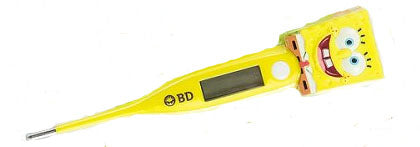With the flu season upon us (and apparently the apocalypse according to politicians), it’s time we address how to come back to training after being ill. There are a couple things that have to be addressed before we do so.
- Having the sniffles or feeling a general sense of malaise does not qualify as being ill.
- If the pizza you ate last night gave you some nasty soft-serve as a morning present, you cannot claim yourself as a victim.
An illness is something that knocks you on your ass for a week or so and makes you feel like death. For example, people often ask if you should train when you are sick. If you can train, you aren’t sick. You may not feel well, but you aren’t sick. When the thought of training is an impossibility, you are, without a doubt, sick.
It reminds me of the question I’ve answered more than a hundred times, “How do I know if I’m ready to use chains and/or bands?” The answer is always, “When you stop asking the question and know the answer.”
The first things you need to do is get your sleep and nutrition back on track. There is a good chance you lost some weight during your illness. And even if you were in bed and asleep for much of the time, your body was fighting the illness and needs sleep. Make sure you are drinking fluids and replacing minerals (magnesium, sodium). If you took antibiotics during your illness make sure you are supplementing with probiotics.
As for nutrition, it seems that everyone genuflects to their own Diet God these days; so whatever message you are currently adhering to – make it happen. The important thing is that you eat food that agrees with your stomach and doesn’t screw with your recovery. In other words, don’t eat a bunch of sugar and other crap.
If you have lost weight, don’t try to put it all back on in day. Just like a UFC fighter cutting weight and putting it all back on in a day – it’s not the same weight. Even if the scale reads correctly, your body isn’t magically the same. Be patient with the weight gain.
As for training, I’m going to assume you are doing a 5/3/1 based program. No matter which variation you were doing prior to your illness, you will use the training program as your post-illness template. You will be lifting 3 days/week.
Main Lifts
You will use your 3x5 week numbers for all the main lifts. You will not go for PR sets; you will use the 5’s Progression (5’s PRO) model for all the main lifts. You will do ONE MAIN LIFT PER WORKOUT. The sets and reps of the main lifts will look like this:
- 45% x 5
- 55% x 5
- 65% x 5
- 75% x 5
- 85% x 5
If at any time one of the sets feels heavy or awkward, you will repeat the set. If it again feels way too heavy, you will stop and move on to the assistance work. You will follow this set/rep program until your lifts feel 100%. Make sure each and every rep is smooth/easy and perfect.
Assistance
After you perform your main lift, you will move on to your assistance work. You will choose one assistance lift from the three assistance categories. I recommend picking movements that you are familiar with. If you are feeling lethargic after the main lift, choose movements that are easier.
The three assistance categories are: push, pull, single leg/core
- Push – DB pressing movements (various angles), dips, push-ups, triceps extensions, triceps pushdowns
- Pull – rows (various kinds), lat pulldowns, chin-ups, pull-ups, curls (various), face pulls, band pull-aparts, rear laterals
- Single Leg/Core – all single leg movements, DB squats, DB SLDL, good mornings, glute ham raise, back raise, Reverse Hyperextension, all abdominal movements
The list above is just a sample of movements; feel free to choose others.
I recommend you perform 25-50 reps of EACH assistance movement and perform them in a circuit. You do NOT have to time the circuit or try to kill yourself; do your next set when you feel damn good and ready. Get a little sweat going and get a pump. Here is an example of a moderate Post-Illness circuit
- DB squat – 10 reps
- Lat Pulldown – 12 reps
- Push-ups – 10 reps
Done 5 times through; no timed rest between movements. Take as much (or as little) time between sets as you need.
Off-days
On the days you don’t lift, I recommend 20-30 minutes of very easy conditioning work. For most people this would consist of a walk (with or without a weight vest), riding a bike or doing any typical cardio machine. If possible, get outside. Stop breathing the gross inside air. You don't need to be killing yourself with conditioning so don't drag a car while your training partner hits you in the nuggets with a leather sap.
I’d also recommend you performing your mobility/flexibility routine that you do prior to training on your off days. I do a morning “yoga” routine every day and it helps greatly.
llness happens to everyone – and yes, your training will suffer. But unless you lost a limb, your loss of strength and size is only temporary. There’s no need to panic when you consistently train hard and smart.




